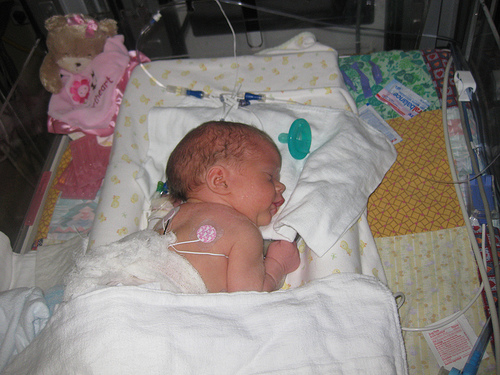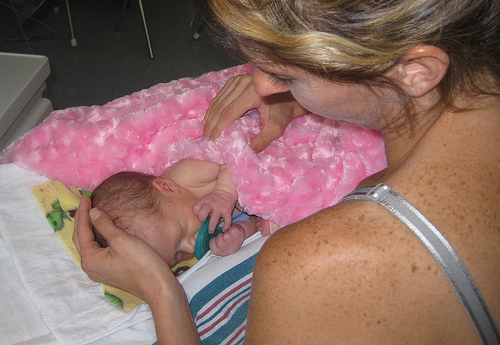
Here is our Brooklyn, not even 24 hours old yet, recovering from her first major surgery.
Brooklyn has myelomeningocele, the most severe (and common) form of Spina Bifida. Basically, while she was forming in my womb, her spinal cord did not close properly, causing nerves to be exposed and an irregular flow of cerebrospinal spinal fluid. That means part of her spinal cord was literally sticking out of her back, causing nerve damage and permanent paralysis.
When Brooklyn was born, she had to be wrapped in plastic and could not be held. She also had to be immediately transported to a children’s hospital to have surgery to close the opening in her back. I was able to see her for five minutes — just enough time to hold her little hand — before the nurses rolled her away to the ambulance. I wouldn’t see her again for two very long days.
Myelomeningocele may affect as many as 1 out of every 800 infants. The levels of nerve damage and complications vary by individual and can take time to identify, which makes waiting a very big part of Spina Bifida.
The causes of MM and other forms of Spina Bifida are unknown, but they have found that prenatal vitamins with folic acid can decrease the chances of occurrence. The tricky part is that it happens very early in pregnancy, typically before a mother even knows she is pregnant.
If you want to read more about Spina Bifida, you can go here. I also wrote this blog post shortly after we found out about Brooklyn’s diagnosis. I promise you there is much more to the story than a bunch of facts and statistics, but I wanted to start here, with the basics.
Because of the compassion of a nurse, I was able to hold Brooklyn the day we were reunited. Yes, there was a foam layer between us, but in that moment, I realized just how very precious life is. Every life.
I realized how thankful I was just to have her. Nothing — I mean nothing — else mattered.
